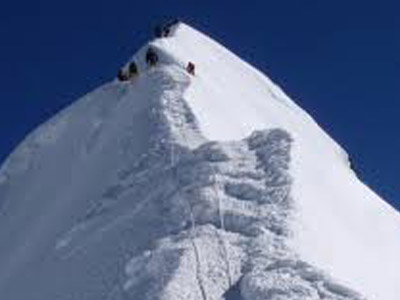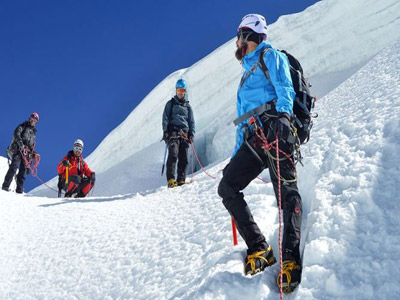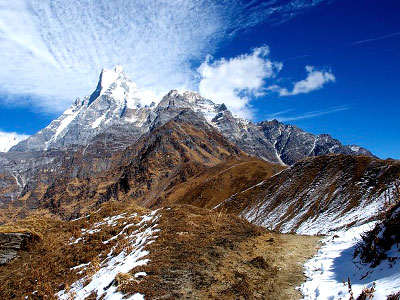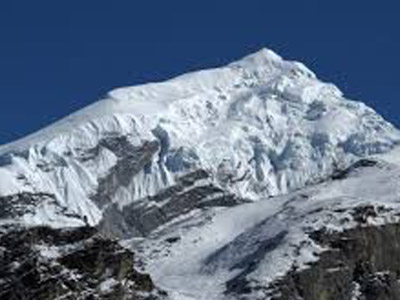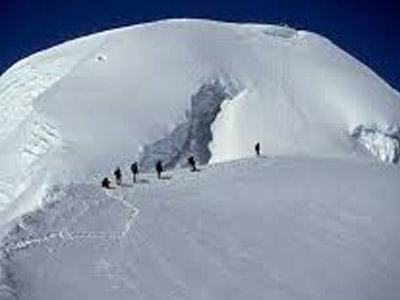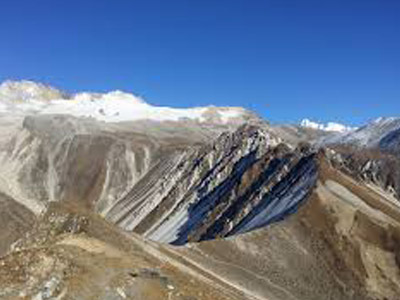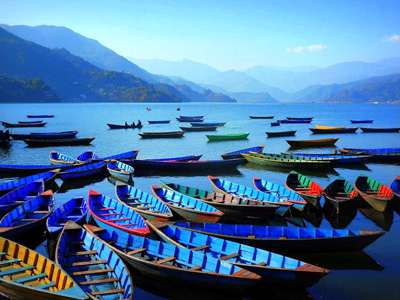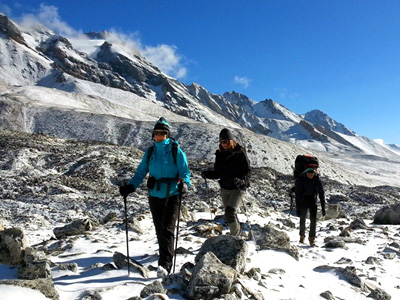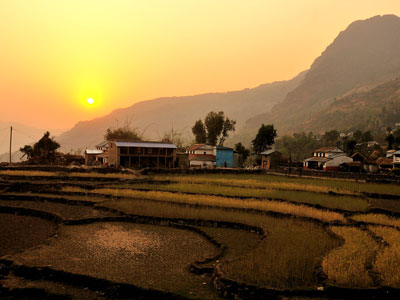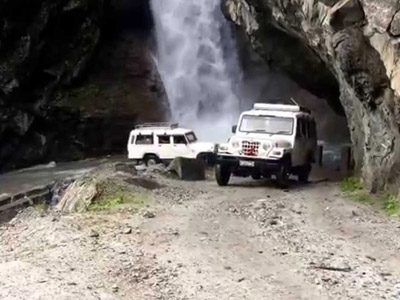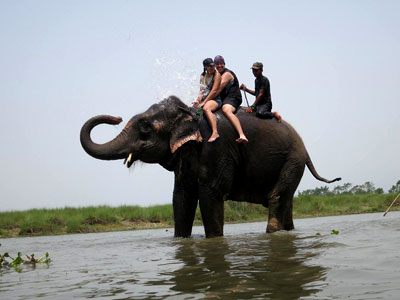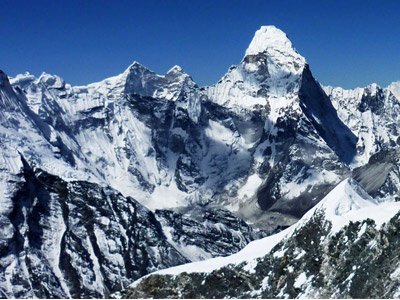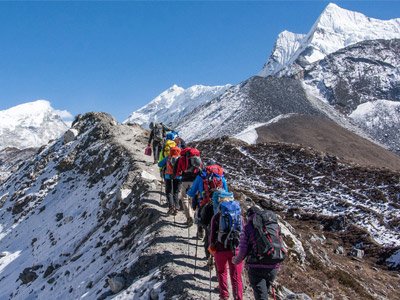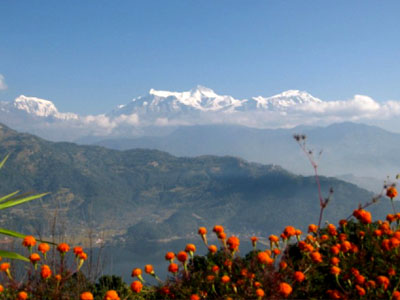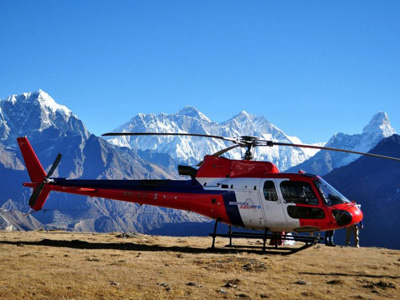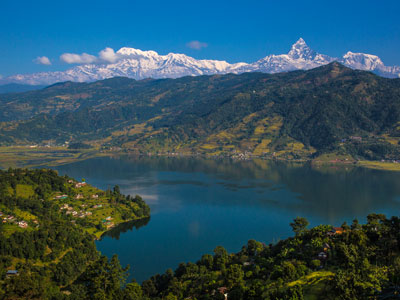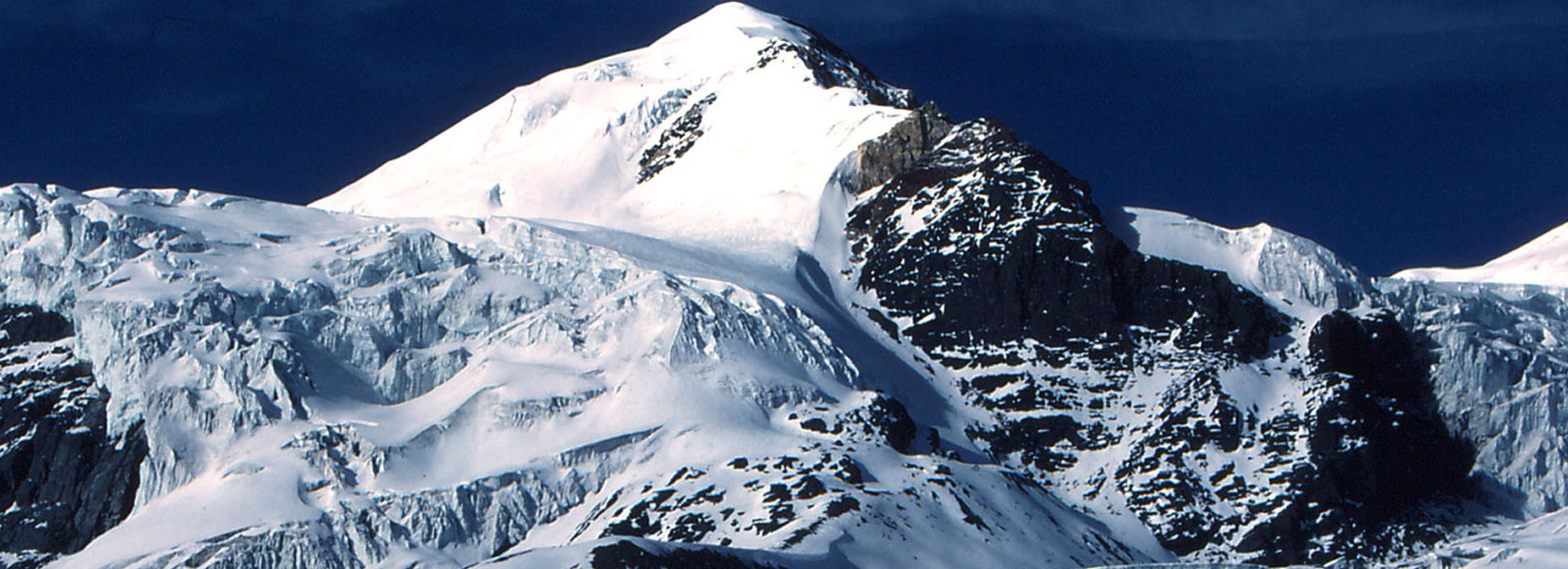
Pisang Peak Climbing
Trip Difficulty: Easy
Destination Nepal
Overview of Pisang Peak Climbing
Pisang Peak is the most popular climbing peak in the Annapurna circuit trek. This peak lies at an altitude of 6091m from sea level which is situated at the northern part of Manang district. Pisang peak lies between the Annapurna I and Manaslu. Pisang peak rises from Yak kharkha( pastures) above the village of pisang to the pyramidal slope of the pisang peak.
Pisang peak offers you the magnificent views of the majestic Himalayan vista, panoramic view of the rural Nepal, along with the diversed ecosystem, lifestyle and ever longing spectacular terrain. Walking past the forest of well blossomed rhododendron, birch, pine and magnolia from where you can witness the green lushly villages and the snowy white majestic Himalayan ranges to the north. It will absolutely be once in a lifetime experience in which one can fully enjoy the life.
Nepal’s geography holds a unique varied landscape in captivating a unique diverse of flora, fauna and terrain with spectacular mix of lifestyle of people. Mountaineering in Nepal is above the “Tree Line Zone” which can be seen as the zone of snow rock and ice. The lure of Himalayas is irresistible as the high ranging altitude provides a best scenario view of the harshest climate in the world. The sheer beauty, dramatic massive mountain, best challenging route and the well established hospitality of the people is a sure to go trip.
Pisang peak is considered to be an easy climbing peak where regular fitness with moderate fitness is required. This is a grade 3 travel with little or no knowledge required for climbing. But while exposing to the high altitude one must have a high determination and will power to endure and adapt to the higher altitude.
Pisang peak climbing route
Pisang peak climbing starts from capital of Nepal; Kathmandu to the Besisahar of Lamjung via scenic drive. Then you will trek past many local villages like Nga Di, Syange, Tal, Timang to the Pisang village. You will rest and accommodate in local guest house to this point while camping will be obligatory after this point. You will move to the Base Camp where you will rest and acclimatize then to the high camp. Finally you will summit the Pisang peak where you will achieve the great achievement of the life after summating the peak.
Best climate for Pisang peak climbing
The climate in Nepal can sometime become notorious. The best valued of time and season must be taken care while visiting the harsh and wildest nature of Nepal. There are mainly two season famous for operating expedition in Nepal.
SPRING SEASON
Spring is the best season for expedition in Nepal. This includes the month from late February to May month. The climate will be most vivid at this time with the lushly view of the massive mountain terrain. The wind is not harsh and the trail will be less difficult than other season where it is mostly covered with snows. This season has the highest record of expedition in Nepal. The region will be more crowded with people thus the cost efficient travel is most.
AUTUMN SEASON
Autumn is another season for the best time to summit the peaks. This season include from the month of late September to early December. The nature is with lushly hills with the vivid sky. The weather will be with less heat haze which includes best spectacular views of the massive peak ranges around the world. this is the second most crowded season of the year. There will be fewer crowds as compared to the spring season.
Physical fitness required for Pisang peak climbing
This peak climbing needs moderate level of physical fitness. This is a grade 3 level of peak climbing thus one must be supposed to be physically fit free from any disability. The climbers must be in healthiest shape and must endure the harsh wilderness and nature so as to successfully complete this very peak climbing.
Food and Accommodation in Pisang peak climbing
Food and accommodation is all provided through the package. The stay in the Kathmandu will be of two days where you will stay at hotel based on your level of preference. From Besisahar you will stay at the tea houses and lodges till to Pisang village. From there you will stay on the tent and camp so we will prepare our own food by guide or Sherpa till the final level of ascend and descend till to the Pisang village. The days on the camp will normally be 2 to 3 days decided on the basis of your level of fitness and health.
Pisang Peak Climbing Permit cost
The cost of obtaining a climbing permit for any peak depends on its category. All climbing and mountaineering activities in Nepal fall under the jurisdiction of the Nepal Mountaineering Association (NMA). The NMA is a commission established to oversee trekking, climbing, and mountaineering activities in Nepal. Its responsibilities include maintaining, conserving, and protecting the natural environment, rare flora and fauna, as well as coordinating emergency rescue operations.
Climbing and mountaineering activities are inherently risky and adventurous. Treks often pass through various national parks, conservation areas, and restricted zones. The permit system was implemented to mitigate risks to rare plants and animals, cultural heritage, and the safety of mountaineers. Consequently, the government of Nepal introduced the Permit system and established the Nepal Mountaineering Association (NMA). The NMA has categorized climbing peaks and mountains into two groups: Group A and Group B.
Group A includes 15 peaks, such as Mera Peak and Island Peak, which require Higher Peak Climbing permits. Group B comprises 18 peaks, including Yala Peak, Pisang Peak, Chulu East Peak, and Chulu West, which require Lower Peak Climbing permits.
To obtain these permits, individuals must apply through registered agencies. The Nepal Mountaineering Association (NMA) is responsible for issuing the permits and determining their associated costs. The cost of a Pisang Peak Climbing Permit, for example, varies based on the season. In spring, the permit costs USD 250, in autumn it costs USD 125, and in summer and winter, it costs USD 70.
Travel insurance for Pisang Peak Climbing
Engaging in adventurous activities carries inherent risks that add to their thrill and excitement. Peak climbing, a widely renowned and exhilarating pursuit, offers a challenging and potentially perilous experience while providing a sense of refreshment and entertainment. Scaling the summit of a mountain allows individuals to immerse themselves in nature and embrace diverse traditions and cultures, offering a temporary escape from daily routines and associated stresses. The breathtaking landscapes and serene ambiance of the mountains provide a rejuvenating environment for climbers.
However, it is essential to acknowledge the risks associated with peak climbing. Rough path, snow-covered terrain, and high altitudes increase the chances of altitude sickness and avalanches, posing potential threats to climbers’ safety and well-being. Therefore, it is of utmost importance for individuals embarking on peak climbing or mountaineering adventures to acquire suitable travel insurance.
Obtaining comprehensive travel insurance is mandatory for obtaining climbing permits. As part of the permit application process, climbers are required to submit a copy of their travel insurance as an essential document. The insurance coverage should include provisions for emergency helicopter rescue, medical treatment and evacuation, as well as rescue expenses. These measures help ensure climbers’ safety and provide necessary support in case of unforeseen circumstances.
While organizing peak climbing adventures, it is important to note that Graceful Adventure Travels does not provide travel insurance packages or engage in insurance-related activities. We highly recommend that trekkers conduct thorough research to identify a reputable insurance company that aligns with their specific requirements. It is crucial to choose an insurance policy that adequately covers the risks associated with peak climbing and provides necessary assistance during emergencies.
By prioritizing safety and taking proactive measures, climbers can enjoy the extraordinary experience of peak climbing while minimizing potential risks.
Graceful Adventure travel Pvt. Ltd. is a registered Adventure travel company from Nepal who organizes the Pisang peak packages to the valued guest all around the globe to the massive Himalayas. Our commitment and our work success has made the guest fall into the love of our charm. Our ultimate motto of travelling the best and safe trail has become famous and selected guest with the best knowledge are involved with us. We are committed in providing best facilities available so as to make your trip go successful. We don’t leave any stone unturned until we have met the expectation and need of our valued guest.
FAQs - Pisang Peak Climbing
The altitude of Pisang is 6091 meters from sea-level.
The optimal time to undertake the challenging ascent of Pisang Peak is during the Spring and Autumn seasons. These periods present the most favorable weather conditions for a successful climb. During Spring and Autumn, the skies are typically clear, providing excellent visibility and reducing the risk of encountering heavy snowfall or rainfall.
One of the remarkable aspects of choosing these seasons is witnessing the transformation of the surrounding landscape. As nature awakens from its winter slumber, vibrant colors emerge, painting the forests with breathtaking hues. The blooming flowers and lush vegetation enhance the overall visual appeal of the trek, creating a picturesque setting to accompany your ascent.
Furthermore, embarking on the climb during Spring or Autumn often coincides with traditional festivals celebrated in the region. This adds an extra layer of cultural immersion to your journey, allowing you to witness and participate in the local festivities, thus enriching your overall experience.
By choosing to climb Pisang Peak during Spring or Autumn, you increase your chances of a successful and memorable adventure, as you navigate through favorable weather conditions and embrace the stunning natural beauty that surrounds you.
According to our default itinerary, it takes 18 days to complete Pisang Peak Climbing. But we also allow to our guests to customize their itinerary as their preference.
Pisang Peak climbing is renowned for its formidable and demanding nature due to high altitude, extreme conditions, and challenging terrain. It requires exceptional endurance, strength, technical skills, and acclimatization. Meticulous planning, preparation, experienced guidance, and proper gear are crucial for a safe and successful ascent. It is a challenging endeavor that demands commitment, determination, and physical fitness, rewarding climbers with a sense of accomplishment and stunning views.
Electricity is readily accessible in hotels located in cities or urban areas such as Kathmandu. Guests are able to freely utilize the available electricity during their stay. However, in villages and rural areas, electricity is typically generated through mini hydropower plants or solar panels. In these areas, the usage of electricity may come with a nominal cost due to the high influx of tourists.
During treks, particularly when camping overnight, electricity is not available. To charge electronic devices, it is advisable to utilize the electricity provided in Homestays or teahouses along the route. Additionally, we recommend carrying a fully charged, powerful power bank to ensure a reliable source of electricity in case of limited access.
Please note that the availability and reliability of electricity may vary depending on the specific location and infrastructure.
In urban areas and cities, we offer a range of hotel options, from 5-star to 3-star accommodations, catering to your budget and preferences. These hotels provide luxurious facilities and a diverse selection of national and international cuisine. You can indulge in a variety of culinary delights during your stay.
However, in villages and rural areas, star-rated hotels are not available. Instead, we offer comfortable homestays, lodges, or tea houses that can meet your requirements. These accommodations may not offer luxury amenities but ensure a fulfilling experience. You can still enjoy local, Indian, and Tibetan cuisine, including the famous and traditional Dal Bhat Tarkari dish. We prioritize dietary requirements and maintain hygienic standards to ensure your well-being.
During camping trips, you will have the opportunity to enjoy the food that you bring along with you. Our team will ensure that proper arrangements are made to facilitate your camping meals.
Please note that while the facilities and options may vary between urban and rural areas, we strive to provide a satisfactory experience and prioritize your comfort and culinary needs.
We have our default itinerary. But we also allow our guests to customize their own itinerary.
Internet is freely available in hotels in cities. In village, there might be available of internet but it may cost some charges in teahouses in rural area. While camping there will not any electricity and internet.
Yes, travel insurance is compulsory for all for any kind of trek or peak climbing. Travel insurance must include emergency helicopter Rescue, medical treatment and rescue.
All the climbers climbing should take the permits for Pisang Peak Climbing. The permit cost varies according to the season. Permit Cost is USD 250 per person in spring, USD 125 per person in Autumn, and USD 70 per person in summer.
Mainly Peak climbing is risky then other trek. While climbing with us, we provide you our must experience guides and porters with all required tools with good quality which helps to reduces the risk factors.
During Pisang Peak Climbing, no one is allowed to trek alone or without guide. The guide is compulsory to all who are climbing Pisang Peak Climbing or any other peak climbing.
Peak climbing is an undoubtedly challenging undertaking, characterized by various obstacles that must be overcome. To surmount these challenges, placing a high priority on physical fitness is essential. Engaging in peak climbing, which is synonymous with mountaineering, demands an exceptional level of physical and mental preparedness. It is an exhilarating and daring pursuit that necessitates unwavering physical and mental strength. As such, those embarking on this adventure must possess exceptional physical conditioning and resilience to conquer the formidable trials that await them.
Graceful Adventure Travel organize the 2800 usd on deluxe package.
Day 1: arrival day
Upon your arrival, we are pleased to inform you that a designated representative from our company will be eagerly awaiting your arrival at Tribhuvan International Airport. The representative will be readily identifiable, as they will be holding a prominent sign displaying our company’s name.
Rest assured, the representative’s main purpose is to extend a warm welcome to you and provide seamless assistance throughout your journey. They will be responsible for picking you up from the airport and ensuring your safe transportation to your designated hotel.
Day 2: Kathmandu valley sightseen and peak climbing preparation
After enjoying a delightful breakfast at 7 am, you will embark on an unforgettable exploration of the UNESCO World Heritage Sites in Kathmandu. This captivating tour encompasses visits to the esteemed Pashupatinath Temple, Swyambhunath, Bouddha, and Kathmandu Durbar Square.
Throughout the tour, you will be accompanied by our knowledgeable guide, who will provide fascinating insights into the historical and cultural significance of each site. The exploration will grant you a deeper understanding of Nepal’s rich heritage.
Upon the completion of the sightseeing tour, you will be escorted back to your hotel. Take this opportunity to savor a delicious lunch and indulge in a few hours of well-deserved rest. During this period, our experienced guide will dedicate their time to provide you with essential information about the upcoming trek.
This valuable session will equip you with the necessary knowledge and preparations for the upcoming peak climbing adventure. Additionally, you will have the opportunity to purchase any required tools or equipment essential for the peak climbing experience.
Day 3: drive from Kathmandu to Chamje
After enjoying a delicious breakfast, we embark on our memorable journey from Kathmandu to Chame. As we make our way, we are captivated by the awe-inspiring beauty of numerous breathtaking waterfalls that adorn the lush landscape. The melodious sound of cascading waters creates a serene atmosphere that fills us with tranquility.
Our path follows the magnificent Marshyandi River, whose mighty flow reflects the power of nature. The sight of its crystal-clear waters, meandering through the picturesque valleys, leaves us in awe of the wonders of the natural world.
Along the way, we are treated to enchanting vistas of the majestic Manaslu, standing tall and proud in the distance. Its snow-capped peaks and rugged beauty serve as a constant reminder of the grandeur of the Himalayan region.
As the day draws to a close, we find ourselves arriving in Chame, a charming and idyllic town nestled in this breathtaking landscape. The town’s quaint architecture and warm hospitality make it a perfect retreat for weary travelers like us. We eagerly anticipate exploring the hidden gems and immersing ourselves in the rich culture and natural wonders that Chame has to offer. Today stay night in Chamje in lodge or home stay.
Day 4: trek from Chamje to Dharapani
On 4th day of the trek, it will be 1st day of foot trek. Having breakfast in Chamje, begin the trek towards Dhara pani. Initially the trial is flat and beautiful land scape. The trek goes through beautiful forest with magnificent view of Mananslu. The trial is slopy and steep trial also goes through forest of bamboo, rhododendron, etc. opening the eyes during the trek through the forest we will able to witness rare red panda. After trekking for about 5 hours, we will reach Dhara Pani. Today stay a night in Dharapani.
Day 5: trek from Dharapani to Chame
After having breakfast in Dhara Pani, begain the trek through flat and slopy land. The trial is flat and steeped but well maintain quite easy. After trekking for 5 to 6 hours through different villages like Bagarchap, Timang Koto etc. we will get to Chame. And stay a night there in homestay.
Day 6: trek from chame to upper pisang
Today the trek is ascending. Having breakfast in Chame and continue the trek towards the next destination i.e., Upper Pisang. Our trek goes through different village like Bhartang, Dodh Pokhari following by Lower Pisang and finally Upper Pisang. it takes about 6 hours of trek which covers more than 15 km. The trial is sloppy, steeply, somewhere rough but well maintain. So, it will not so difficult. Today we will stay at Upper Pisang.
Day 7: trek from Upper pisang to Pisang Base Camp
On 7th day of the trek, initially trek through alpine forest through ascending path above tree line. We will able to see beautiful bird eye view of green forest and beautiful land scape and stunning view of Annapurna Massif. We will be rewarded by the beautiful nature with beautiful view. Today it will be the first day of camping. We will stay a night camping in Pisang Base Camp.
Day 8: acclimation and pre climbing training in Pisang Base Camp
While going in higher altitude, there is very high risk of altitude sickness because in higher altitude there is low air density and amount of oxygen in higher region. As we are trekking regularly and continuously since last 7 days. We are going for Pisang peak Climbing so, we need some rest before summit. Today we will acclimate in pisang base Camp and have some exploration in Base camp. We will also do some pre climbing training and our guide will provide some information. Today we will spend the night camping.
Day 9: trek up to Pisang high camp from Pisang base Camp and have rest and do pre training for peak climbing
Today elevation is suddenly increasing. Trek is stepped, rough and rocky, high elevation makes difficult. Trekking distance is short and after 4 hours trek, we will reach Pisang high Camp. Explore high Camp and search best place for camping. Today we will take proper rest and do some pre climbing training as it is the last camping before summit. Spend the night camping in High Camp.
Day 10: Pisang peak summit climbing from Pisang High Camp and return back to Pisang Base Camp
Today marks the 11th day of our trek, and it holds immense significance as we embark on the challenging journey to summit Pisang Peak. This particular day presents greater difficulties compared to the preceding ones due to the higher altitude and unpredictable weather conditions. The daytime is characterized by strong wind currents, necessitating an early morning start from High Camp after having breakfast. The trail itself is steep, covered in snow, and exceptionally demanding. Fortunately, our experienced guide will provide proper guidance and ensure your safety throughout the climb. Additionally, our guide and porter will be available to offer technical assistance whenever required.
As we ascend towards the summit, we will be rewarded with a remarkable vantage point to admire the majestic Annapurna Massif up close. Reaching the summit will grant us a breathtaking 360-degree panoramic view of the Himalayas, where we can relish a bird’s-eye perspective above the clouds. Mt. Manaslu, Mt. Annapurna, Lamjung Himal, and other awe-inspiring peaks will grace our sight, creating unforgettable memories. After capturing some photographs and cherishing the experience, we will descend back to Pisang Base Camp, where we will spend the night camping amidst the scenic surroundings
Day 11: Contingency Day
An additional day has been allocated to account for any unexpected occurrences that may arise during the journey. This buffer day allows for adjustments in the itinerary in the event of unfavorable weather conditions at the summit, significant injuries, altitude sickness, or any other unforeseen incidents.
Should the expedition proceed according to the original plan without any complications, this spare day can be optimally utilized for exploring the nearby viewpoints along the route. Participants can take advantage of this opportunity to visit scenic locations or viewpoints at any point during the trip, following the overnight stay at the Tented Camp in Pisang Peak Base Camp.
This provision ensures flexibility and adaptability, allowing for a well-rounded and fulfilling experience regardless of any unexpected circumstances that may arise.
Day 12: trek from Pisang base camp to Manang
On 12th day of the trek, we continue our trek towards Manang from Pisang Base Camp after having breakfast. The trek is descending and trial is in good condition for walk. After trekking for 4 to 5 hours we will arrive at Manang. Today we will have comfortable accommodation in home stay in Manang.
Day 13: trek from Manang to Thorong Phedi
Today, we will commence our day with an early breakfast and embark on a lengthy trek from Manang. The duration of this trek is typically 5 to 6 hours, but considering our recent ascent to high altitudes and the fatigue that accompanies it, we anticipate a slower pace. Therefore, we will take our time, allowing for a more relaxed journey that may span around 8 to 9 hours. Setting off from Manang, we will follow a well-defined trail along the hills, passing through various locations such as Tanki, Gunsang, Yak Kharka, Churi Ladar, and finally reaching Thorong Phedi. Along the way, we will encounter picturesque white stupas that add to the charm of our trek.
As we approach Yak Kharka, the terrain will elevate above 4000 meters, exposing us to higher altitudes. The path will undulate, featuring frequent ascents and descents, thereby increasing the level of risk and difficulty. It is crucial to exercise caution during this section of the trek. Ultimately, our destination for the day will be Thorong Phedi, where we will rest and spend the night.
Day 14: trek from Thorong Phedi to Muktinath via Thorong La Pass
Located at an astonishing altitude of 5416 meters above sea level, Thorong La Pass stands as one of the most formidable mountains passes worldwide. Undertaking the trek from Thorong Phedi to Muktinath via this pass presents a demanding feat, surpassing the difficulties encountered on other days of the journey.
The harsh weather conditions prevailing at Thorong La Pass intensify throughout the day, unveiling fierce winds that typically pick up after 10 am. These formidable gusts possess the potential to jeopardize the safety of trekkers, thereby posing a significant challenge to overcome. To ensure a safe passage, it is highly recommended to initiate the trek at the crack of dawn, preferably before 5 am. By doing so, trekkers can endeavor to traverse the pass prior to 9 or 10 am, allowing them to navigate through its treacherous terrain under more favorable weather conditions.
To further optimize the trekking experience and minimize risks, spending a night in Mustang is advisable. This strategic stopover provides a prudent opportunity for trekkers to rest, and prepare themselves for the demanding leg of the journey that lies ahead. By planning the itinerary in this manner, adventurers can enhance their chances of conquering Thorong La Pass and successfully reaching Muktinath.
Mukti Nath Temple is holy place for both Hindu and Buddhist and also famous for eternal flame and 108 stone taps. Mostly Hindu, Buddhist and other religious people come to visit Muktinath temple making it main destination.
Day 15: trek from Muktinath to Jomsom
Today the trek is easy trek and it will be last day of foot trek. The trek goes through well maintain and good track. The land scape is beautiful. We will stay today in Jomsom.
Day 16: Fly from Jomsom to Pokhara optional drive
From Jomsom, while returning Pokhara you will have two options either drive by jeep or fly over green hills with picturesque view of Annapurna Massif. Today stay a night in Lakeside Pokhara. Stay near Phewa Lake.
Day 17: Drive from Pokhara to Kathmandu (optional flight)
Today drive back from Pokhara to Kathmandu by luxury tourist bus. It may take 5 to 6 hours to reach Kathmandu. And stay the night in hotel in Kathmandu.
Day 18: final departure
On your departure day, which happens to be the 17th day, you are free to do some shopping in Thamel or any other location of your choice in Kathmandu, depending on your flight schedule. One of our company representatives will then provide transportation to the airport in accordance with your scheduled departure time. Please feel free to make any necessary changes to your itinerary or inquire about any additional information you may require.
Note: our itinerary is very flexible one can customize their own itinerary and can extend the trek for more few days and can also add some other tour or trek according to your time and interest. And the cost will be charged according to your luxurious service and customization.
Cost Includes
- Expert climbing Sherpa with porter
- Transport to base camp to/from Kathmandu, including accommodation
- Transport of all equipment to and from basecamp
- Skillful base camp cooks on camping days
- First Aid Kids
- Three meals each day on trekking
- Group emergency equipment and satellite phone
- Private tents in basecamp (no sharing)
- Full base camp with dinning tent, showers, bathroom, and solar charger
- Double occupancy tents above base camp
- All permit fees and liaison officers
- Use of group gear and supplies
- Three nights stay in a Kathmandu hotel on BB plan
- small additional fee.
- Airport transfer
Cost Excludes
- Nepalese visa fee
- International airfare to and from Kathmandu
- Mountain climbing rescue and travel insurance
- Extra night accommodation in Kathmandu because of early arrival, late departure, early return from mountain (due to any reason) than the scheduled itinerary
- Altitude chamber (PAC) or oxygen
- Personal expenses (phone calls, internet, laundry, bar bills, battery recharge, extra porters, bottled or boiled water, shower, etc.)
- Optional trips and sightseeing if extended
- Tips for guides and porters
Reviews on Pisang Peak Climbing
Submit your review | |
1 2 3 4 5 | |
Submit Cancel | |
Interested in this package? Make free inquiry
Reviews on Pisang Peak Climbing
Submit your review | |
1 2 3 4 5 | |
Submit Cancel | |
